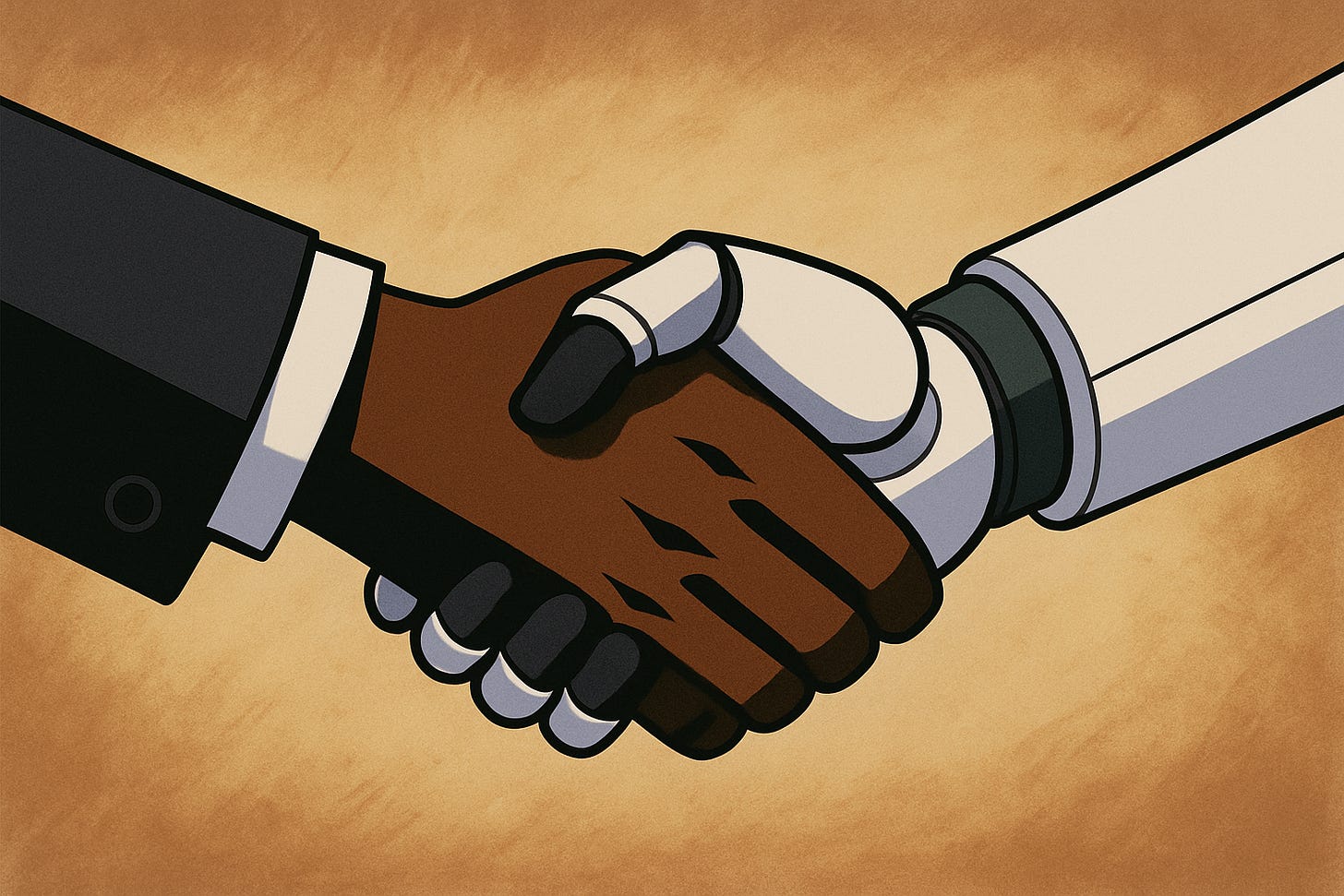Why AI May Not Replace You After All
If the economic theory of comparative advantage has anything to say about AI, your job may be safer than you think.
In recent months, AI has gotten good. Really good. So good that a natural question has emerged: Will AI take my job? A lot has been said on the topic, including a study from OpenAI titled, "GPTs are GPTs: An Early Look at the Labor Market Impact Potential of Large Language Models." Based on the current trajectory of LLMs, the paper predicts:
80% of the U.S. workforce could have at least 10% of their work affected by AI.
19% of workers may see a whopping 50% of their tasks impacted.
Heavily impacted roles are high-income, software-based, writing-related, and/or intensive in data processing.
If you take these findings at face value, there's cause for concern. The answer to “Will AI take my job?” becomes, to some degree, yes.
But just because AI can do something better than you doesn’t mean it should. There’s a difference between having an absolute advantage and having a comparative one.
Absolute advantage refers to the ability to produce more output than another using the same resource. Or to produce the same output using fewer resources.
Comparative advantage, on the other hand, refers to the ability to produce something at a lower opportunity cost, meaning you give up less to produce it than someone else would.
Here’s an example:
Imagine a married couple trying to divvy up household chores. One approach, the absolute advantage approach, would divide tasks purely based on who is better at each.
Spouse 1 can fold laundry in 10 minutes and do dishes in 20 minutes.
Spouse 2 takes 30 minutes to fold laundry and 30 minutes to do dishes.
Clearly, Spouse 1 is faster at both chores. Should Spouse 1 just do all the work?
Not only would this lead to an unbalanced relationship, but it’s also not the most efficient outcome when we consider comparative advantage.
Let’s look at the opportunity costs:
If Spouse 1 spends 10 minutes folding laundry, they give up doing half a sink of dishes (since dishes take 20 minutes).
If Spouse 1 spends 20 minutes doing dishes, they give up folding two loads of laundry (since laundry takes 10 minutes per load).
For Spouse 2:
30 minutes folding laundry means giving up washing one sink of dishes.
30 minutes doing dishes means giving up folding one load of laundry.
Now, comparing opportunity costs:
Spouse 1 gives up only half a sink of dishes to fold laundry, while Spouse 2 gives up a full sink.
Spouse 1 has the comparative advantage in folding laundry.
Spouse 2 gives up one load of laundry to wash dishes, while Spouse 1 gives up two loads.
Spouse 2 has the comparative advantage in doing dishes.
Even though Spouse 1 has an absolute advantage in both tasks, comparative advantage shows they achieve a better overall outcome by specializing based on opportunity cost. By working together strategically, they can complete more chores in less time.
This example highlights why, even if AI becomes better than humans at most tasks, it may not serve humanity best to have AI doing everything. In many cases, humans will still hold a comparative advantage, particularly in areas where relationships, creativity, emotional intelligence, and moral judgment are critical.
Our limits as humans become a feature of our partnership with AI, not a flaw leading to our replacement. We and AI will be better off augmenting each other rather than trying to duplicate or replace one another.


🤝🤝